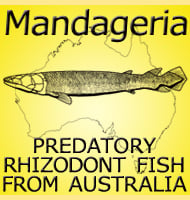Tiktaalik
In Depth In 2004 the discovery of three fossils would help bridge one of the most important evolutionary gaps in the fossil record. These fossils were the first known representations of Tiktaalik, a creature that was not only a fish but also possessed the rudimentary features of the later tetrapods. Unlike other creatures which are … Read more


